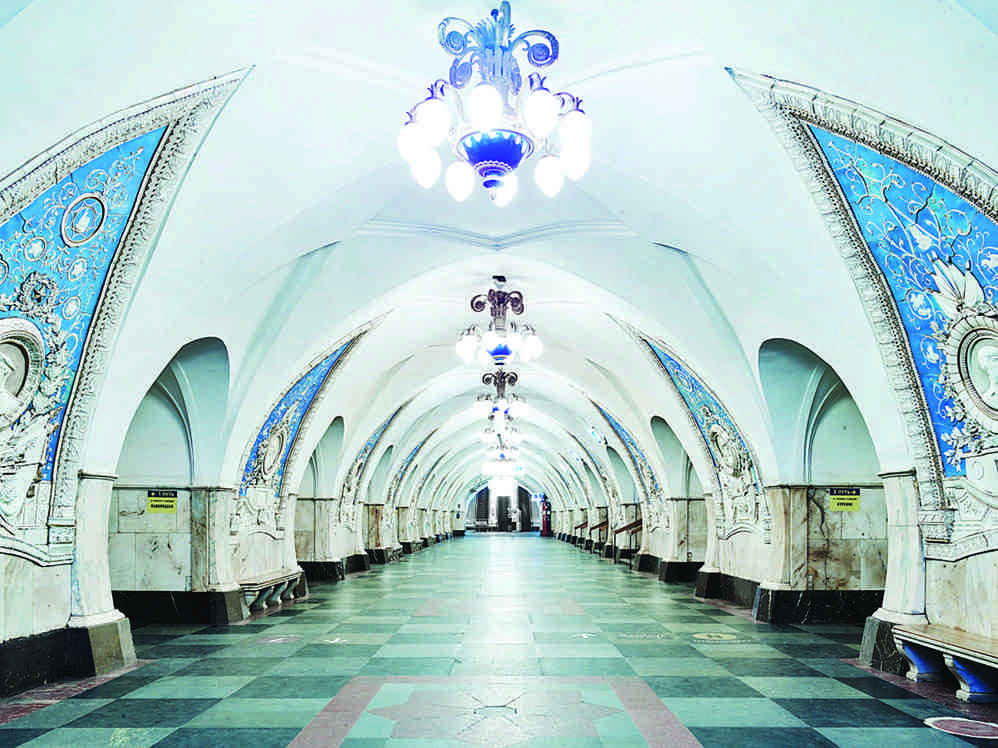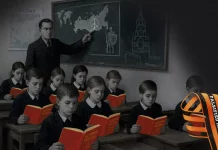
For two weeks last year, Canadian photographer David Burdeny spent his nights 200 feet underground, shooting the surreal opulence of the Moscow Metro. With their ornate chandeliers, marble walls, bronze columns, and intricate mosaics, these railway stations have been likened to an “artificial underground sun.” (Aesthetically, they’re as far from the rat-infested purgatory of New York City’s subway system as you could possibly get.)
As far as he knows, Burdeny is the only professional photographer in the world to have been granted permission to extensively shoot these locations emptied of passengers. Now, 20 of his luminous, large-scale photographs are on view in A Bright Future – New Works from Russia at the Jennifer Kostuik Gallery in Vancouver.

When looked at out of historical context, Burdeny’s photos seem like pretty pictures of architectural marvels that are stylistically similar to the pre-Soviet Russian Empire’s palaces. But when the Moscow Metro opened in 1935, its designs served as Communist propaganda. As part of his plan to build a Socialist motherland, Stalin directed architects to embody the concept of “svet,” or light, and “sveltloe budushchee,” or “a bright future,” in their work.
Under the slogan “The whole country is building the Metro,” nearly 75,000 workers toiled. These “palaces for the people,” as Stalin called them, were intended to remind the often hungry, downtrodden masses that their tax rubles had been well spent.

“The ornamentation — crystal chandeliers and cobalt blue glass, exquisite red marble quarried in Russia, magnificent bronze columns and intricate ceiling plaster relief — forced people to physically ‘look up’ to the light, giving thanks to Stalin, or so he assumed,” Burdeny told Mashu Mashu. Pertaining to socialist philosopher Nikolay Chernyshevsky’s maxim that “art is no use unless it serves politics,” many stations contained Social Realist themes. Mosaicked portraits and busts of Lenin can be found at 10 stations. One station features bronze sculptures by Matvey Manizer depicting the creators of the new Socialist order — farmers, workers, soldiers and athletes. “Sadly, I never saw a plaque that credited even a single artist or sculptor anywhere,” Burdeny says.

Getting permission to photograph these stations wasn’t easy. Burdeny butted heads with Moscow bureaucracy for a year. It wasn’t until seeing the Moscow Metro featured in a scene of the TV show Top Gear and contacting its producers that he was able to find the right people to help him secure permissions. In the two weeks he spent shooting, Burdeny had to rent each station by the hour, and was only allowed to shoot on the platforms after midnight, once the Metro had closed. Using a Cambo medium format technical camera, his exposures ran from 10 to 15 seconds, capturing the luminous stations in all their glory.
Now 80 years old, the Moscow Metro transports up to 9 million people a day through its 200 stations. Expansion plans aim to make it the world’s largest subway system by 2020.

By





